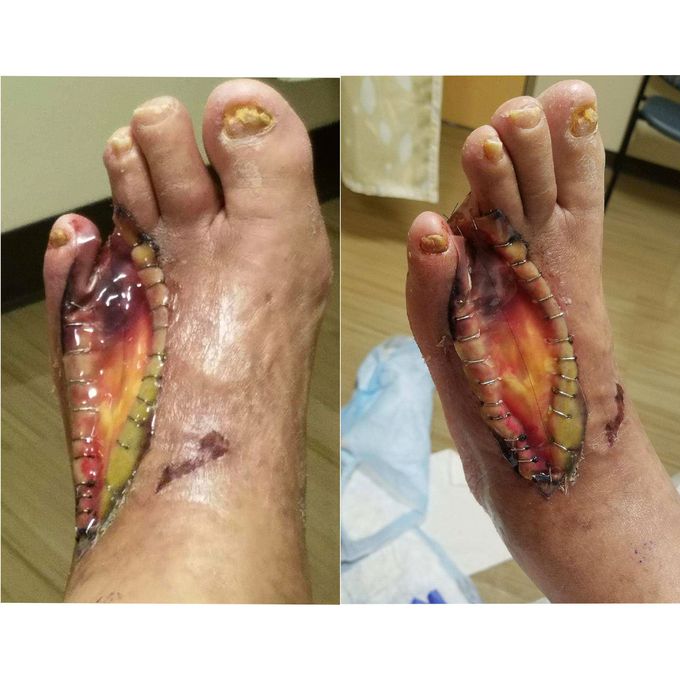


This patient had gotten his toe removed because of diabetes!!
Broadly speaking, the vast majority of toe amputations are performed on patients with a diabetic foot. A “dead” toe is one in which the blood supply is so completely impeded that infarction and necrosis develop. Infarction results in dry gangrene, with nonviable tissue becoming dry and black in color (because of the presence of iron sulfide, a product of the hemoglobin released by lysed erythrocytes). This is most commonly seen as a complication of diabetes mellitus and is due to a combination of macrovascular and microvascular disease. Other major risk factors for peripheral vascular disease (as for all atherosclerotic diseases) include smoking, hypertension, and hyperlipidemia. Rarely, pathologic processes confined to the microvasculature are to blame, such as thromboangiitis obliterans (Buerger disease), vasospastic diseases, and severe frostbite. The method of toe amputation (disarticulation vs osteotomy) and the level of amputation (partial or whole phalanx vs whole digit vs ray) depend on numerous circumstances but are mainly determined by the extent of disease and the anatomy.


